Chips
Chips help users 1) refine topics, 2) discover related topics, next steps, and pivots, and 3) take action. Sometimes it’s faster and easier for users to tap a chip than it is to say or type their response. When users tap a chip, that text becomes part of the conversation as the user’s response.
Goals
Refine topics.
Offer chips that clarify user goals and intent
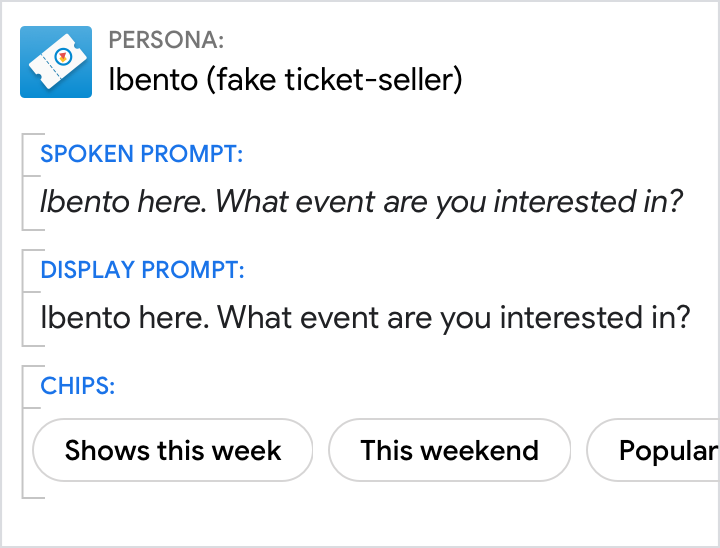
Discover related topics, next steps, and pivots.
Show related entities and queries

Take action.
Surface relevant actions

Requirements
| Screen only | Chips can only be displayed on devices with screen output. The number of chips that appear depends on the size of the screen on which they appear, with any remaining chips scrolling offscreen. |
| Maximum number of chips per turn | 8 |
| Maximum text length per chip | 25 characters |
| User response | By default, when a user taps a chip, the text of that chip then becomes the user response. So make sure you include all your chips as training phrases that trigger an intent. If you’re using Dialogflow, go here to read more about intents. |
| URLs (optional) | Chips can link out to external websites. |
Guidelines
Chips should be
- Conversational to make it easy for users to say and remember them
- Relevant to ensure user trust
- Action-oriented to encourage user engagement and promote conversation
- Concise for scannability and to maximize the number of chips shown
- Consistent to create a reliable experience throughout a dialog
- Clear about destination to set appropriate user expectations
Provide a range of options.
Especially when asking a wide-focus question , include chips that cover the full range of options rather than focusing exclusively on one topic.

Do.
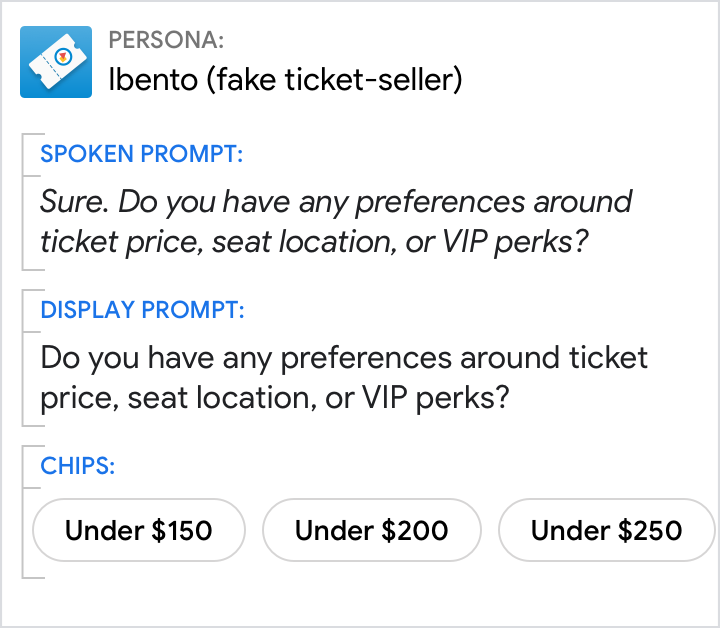
Don't.
Move the conversation forward, but don’t put words in the user’s mouth.
Prioritize being brief and action-oriented over using the exact words a user might say.
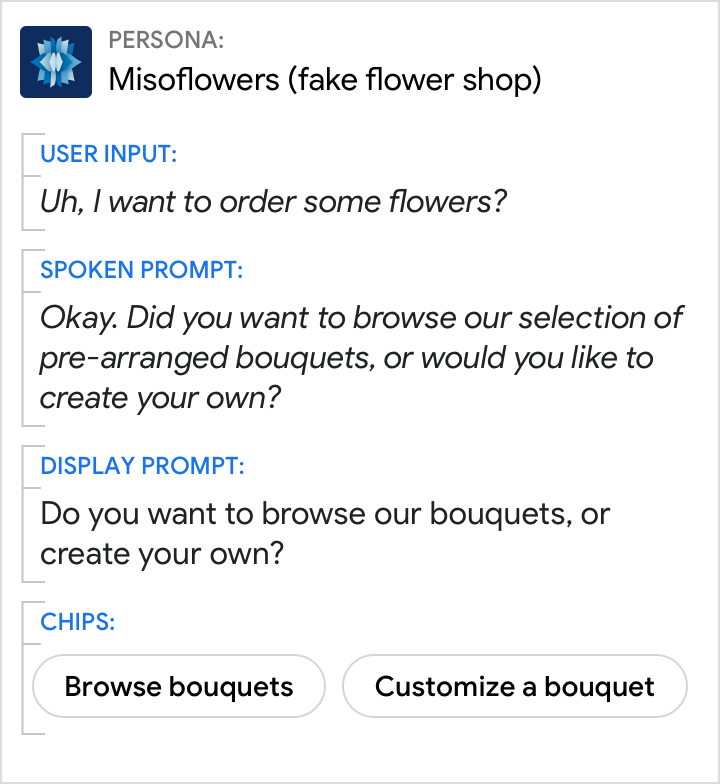
Do.
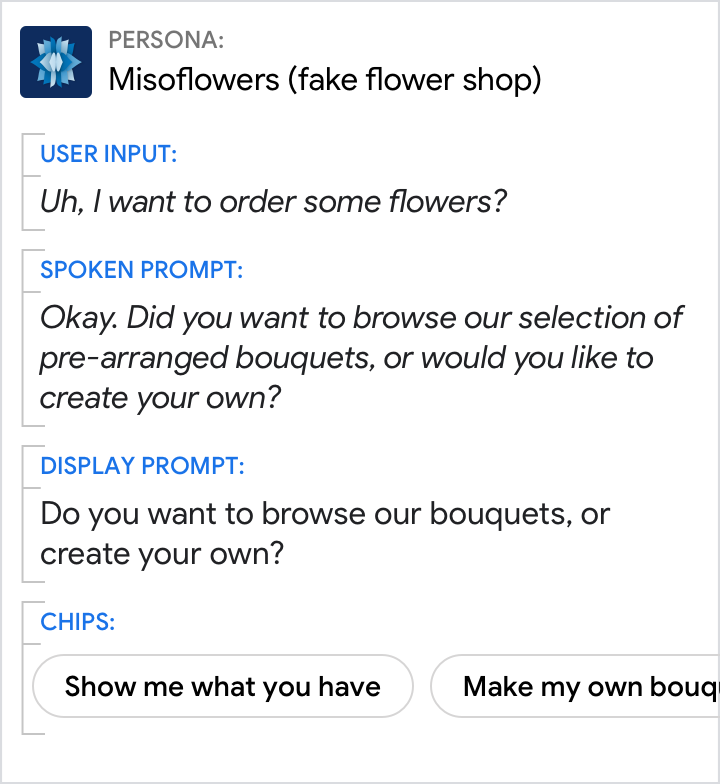
Don't.
Favor verb-noun combinations.
Lead with a verb if the chip starts an action. And follow verbs with a noun to confirm what the chip is referencing.

Do.

Don't.
Don’t repeat options shown in a list or carousel.
Lists and carousels are optimized for helping users make a selection. In these cases, use chips to help the user refine the list or to say they don’t want any of those options.
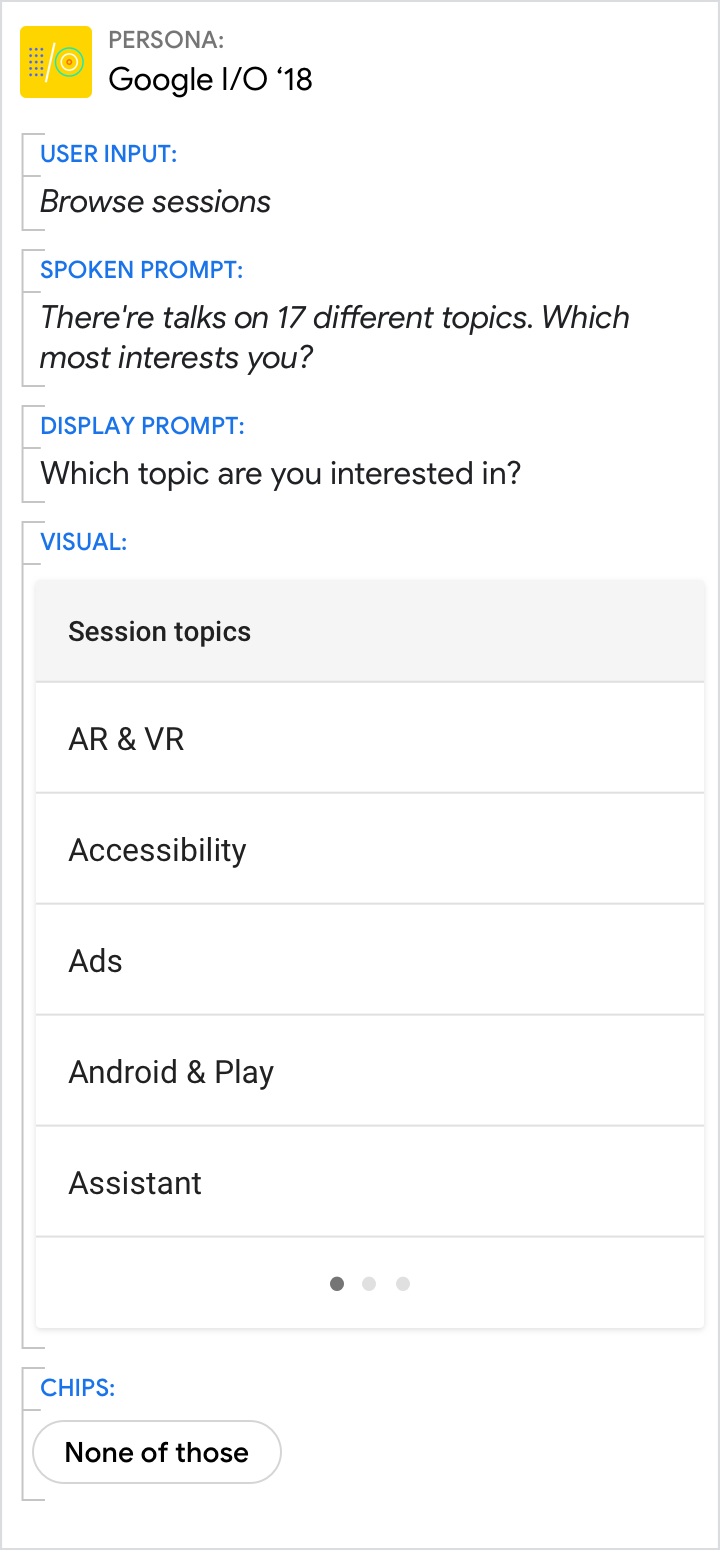
Do.

Don't.
